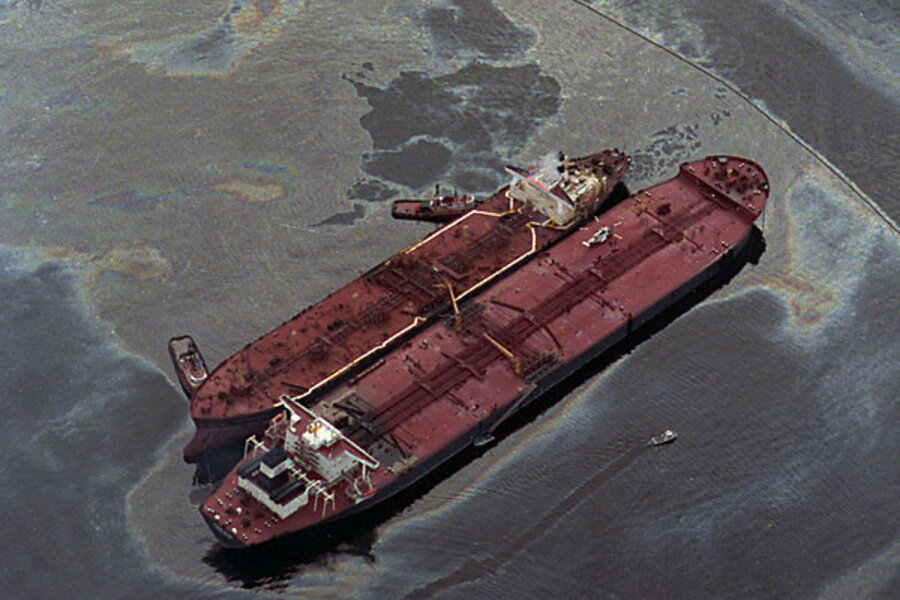Gulf oil spill now bigger than Exxon Valdez disaster
Loading...
The Gulf oil spill has surpassed the Exxon Valdez as the worst in U.S. history, according to new estimates released Thursday, but the Coast Guard and BP said an untested procedure to stop it seemed to be working.
A team of scientists trying to determine how much oil has been flowing since the offshore rig Deepwater Horizon exploded April 20 and sank two days later found the rate was more than twice and possibly up to five times as high as previously thought.
Even using the most conservative estimate, that means the leak has grown to nearly 19 million gallons (72 million liters), surpassing the size of the 1989 Exxon Valdez disaster, which at about 11 million gallons (42 million liters) had been the nation's worst spill. Under the highest estimate, nearly 39 million gallons (148 million liters) may have spilled.
BP did not immediately comment on the new estimate.
U.S. Geological Survey Director Marcia McNutt said two different teams of scientists calculated that the well has been spewing between 504,000 gallons (1.9 million liters) and more than 1 million gallons (3.8 million liters) a day.
BP and the Coast Guard estimated soon after the explosion that about 210,000 gallons (nearly 800,000 liters) a day was leaking, but scientists who watched underwater video of well had been saying for weeks it was probably more.
Last week, BP inserted a mile-long (1.6 kilometer long) tube to siphon some of the oil into a tanker. The tube sucked up 924,000 gallons (3.5 million liters) of oil, but engineers had to dismantle so they could start the risky procedure known as a top kill to try to cut off the flow altogether by shooting heavy drilling fluid into the well.
If that works, BP will inject cement into the well to seal it. The top kill has been used above ground but has never been tried 5,000 feet (1,524 meters) beneath the sea. BP pegged its chance of success at 60 percent to 70 percent.
Lt. Commander Tony Russell, an aide to Coast Guard Adm. Thad Allen, said Thursday that the mud was stopping some oil and gas but had a ways to go before it proved successful. The top kill started Wednesday night and it could be several days before officials know if it is working.
"As you inject your mud into it, it is going to stop some hydrocarbons," Russell said. "That doesn't mean it's successful."
BP spokesman Tom Mueller also discounted news reports that the top kill had worked.
"We appreciate the optimism, but the top kill operation is continuing through the day today — that hasn't changed," he said Thursday morning. "We don't anticipate being able to say anything definitive on that until later today."
Oil is coating birds and delicate wetlands along the Louisiana coast, and the political fallout from the spill has reached all the way to Washington, where the head of the federal agency that oversees offshore drilling resigned Thursday.
Minerals Management Service Director Elizabeth Birnbaum stepped down just hours before a planned White House press conference where President Barack Obama was expected to extend a moratorium on new deepwater oil drilling.
Birnbaum and her agency came under withering criticism from lawmakers of both parties over lax oversight of drilling and cozy ties with industry. An internal Interior Department report released earlier this week found that between 2000 and 2008, agency staff members accepted tickets to sports events, lunches and other gifts from oil and gas companies and used government computers to view pornography. Birnbaum had run the service since July 2009.
After receiving the results of a 30-day safety review from Interior Secretary Ken Salazar, Obama also planned to delay controversial lease sales off the coast of Alaska and cancel entirely plans for drilling lease sales in the Western Gulf and off the coast of Virginia, according to a White House aide.
If the top kill fails, BP says it has several backup plans, including sealing the well's blowout preventer with a smaller cap, which would contain the oil. An earlier attempt to cap the blowout preventer failed. BP could also try a "junk shot" — shooting golf balls and other debris into the blowout preventer to clog it up — during the top kill process.
The only permanent solution is drilling a second well, but that will take a couple of months. BP plans to go ahead with that even if the top kill works.
Though the spill is now the biggest in U.S. history, it's not the biggest ever in the Gulf. An offshore drilling rig in Mexican waters — the Ixtoc I — blew up in June 1979, releasing 140 million gallons (530 million liters) of oil.
___
Borenstein reported from Washington. Ben Nuckols in Covington, Louisiana, and Andrew Taylor and Matthew Daly in Washington contributed to this report.
Related:





